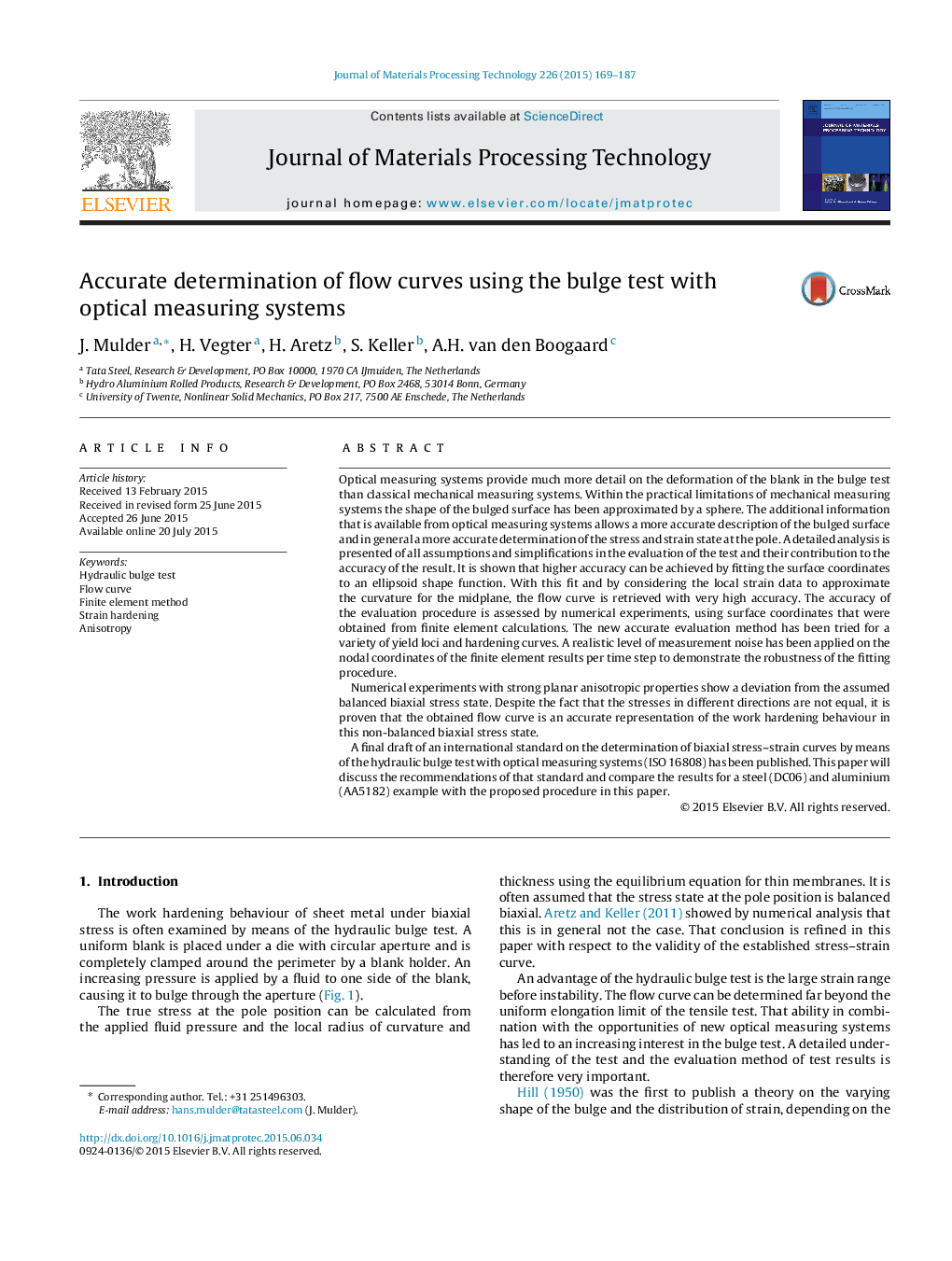| Article ID | Journal | Published Year | Pages | File Type |
|---|---|---|---|---|
| 794661 | Journal of Materials Processing Technology | 2015 | 19 Pages |
Optical measuring systems provide much more detail on the deformation of the blank in the bulge test than classical mechanical measuring systems. Within the practical limitations of mechanical measuring systems the shape of the bulged surface has been approximated by a sphere. The additional information that is available from optical measuring systems allows a more accurate description of the bulged surface and in general a more accurate determination of the stress and strain state at the pole. A detailed analysis is presented of all assumptions and simplifications in the evaluation of the test and their contribution to the accuracy of the result. It is shown that higher accuracy can be achieved by fitting the surface coordinates to an ellipsoid shape function. With this fit and by considering the local strain data to approximate the curvature for the midplane, the flow curve is retrieved with very high accuracy. The accuracy of the evaluation procedure is assessed by numerical experiments, using surface coordinates that were obtained from finite element calculations. The new accurate evaluation method has been tried for a variety of yield loci and hardening curves. A realistic level of measurement noise has been applied on the nodal coordinates of the finite element results per time step to demonstrate the robustness of the fitting procedure.Numerical experiments with strong planar anisotropic properties show a deviation from the assumed balanced biaxial stress state. Despite the fact that the stresses in different directions are not equal, it is proven that the obtained flow curve is an accurate representation of the work hardening behaviour in this non-balanced biaxial stress state.A final draft of an international standard on the determination of biaxial stress–strain curves by means of the hydraulic bulge test with optical measuring systems (ISO 16808) has been published. This paper will discuss the recommendations of that standard and compare the results for a steel (DC06) and aluminium (AA5182) example with the proposed procedure in this paper.
